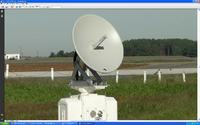vamshi999
Newbie level 5
hi
i want to test a parabolic antenna (X-band 9410 MHz) ...... i know there are some software's like HFSS and FEKO but i am a newbie in this area ..can you please tell any easy way to test my antenna
thank you
i want to test a parabolic antenna (X-band 9410 MHz) ...... i know there are some software's like HFSS and FEKO but i am a newbie in this area ..can you please tell any easy way to test my antenna
thank you
